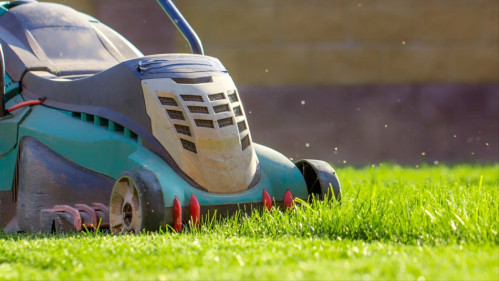How does a scarifier work and what is it used for?
The simplest scarifier can be an iron rake or, in a more professional version, a rake-shaped scarifier, in which the teeth are replaced by flat cutting elements. However, for larger lawn areas, the use of electric or diesel scarifiers becomes indispensable.

What is the technique of scarifier operation?
Regardless of which scarifier you use, the goal is the same: to make a large number of cuts in the turf and at the same time, remove the layer of so-called "felt", i.e. mosses, lichen, old grass and sprouting weeds that spread in the lower layers of the turf. On a small lawn of a few dozen square meters, a hand scarifier is sufficient. However, for larger lawns, a mechanical scarifier - electric or diesel - will be much more convenient and accurate. These devices, at first glance resembling lawnmowers, instead of a rotating blade, are equipped with a roller with steel blades. Its height can be adjusted and thus precisely determine the depth of cuts in the soil.
For larger acreages, but also for areas without electrical connections, a professional petrol scarifier will be the optimal device. This is ideal for lawn care on golf courses, natural turf fields or extensive lawns in recreational areas and parks. A professional device allows you to scarify an area of up to 1500 m2 of lawn in an hour. The downside of petrol scarifiers is that they are expensive machines, which we usually use once or twice a season. The solution to the problem is to use the offer of an equipment rental company that offers equipment for gardening work.
What is the purpose of scarifying?
Before using the scarifier, it is necessary to carefully level molehills, collect stones and other solid debris from the grass, and carry out lawn mowing. The purpose of scarifying is to bring air to the turf, to create better conditions for irrigation and fertilization, to allow the grass to grow, and to perform seeding to supplement the "baldness" of the lawn, which may have developed during the winter. In the case of soils with a very compact structure, we can perform scarification twice - one after the other - using different cutting depths.
The scarifying procedure is carried out in spring, after the first or second mowing, and - if necessary - repeated in autumn. After mechanical scarifying, carefully rake out the plant felt torn out by the device, small stones, undecomposed grass left after mowing and all other debris. Usually the material after scarifying contains fungal spores and weed seeds, so do not rather put them in the compost heap, but deposit them in a separate pile.
If you intend to reseed the lawn after scarifying, choose the right season and weather - so that the soil has plenty of moisture necessary for the grass to germinate and take root. Grass seed can be mixed with well-processed compost or peat and poured into the grooves left by the scarifier.
Professional scarifiers have the option of using a roller for aeration. This is one of the reasons for the frequent confusion between these two turf aeration treatments.
Are scarifying and aeration the same confluence?
Aeration is a treatment that, like scarification, is designed to aerate the lawn, bring the air necessary for grass growth to the lawn, loosen the soil, and create opportunities for easier irrigation and fertilization. The main difference is that aeration does not cut the turf, but pricks it. This can be done with a variety of sharp tools - the simplest aerator can be a metal rake, but the greatest convenience, accuracy and speed of work is provided by a mechanical aerator.